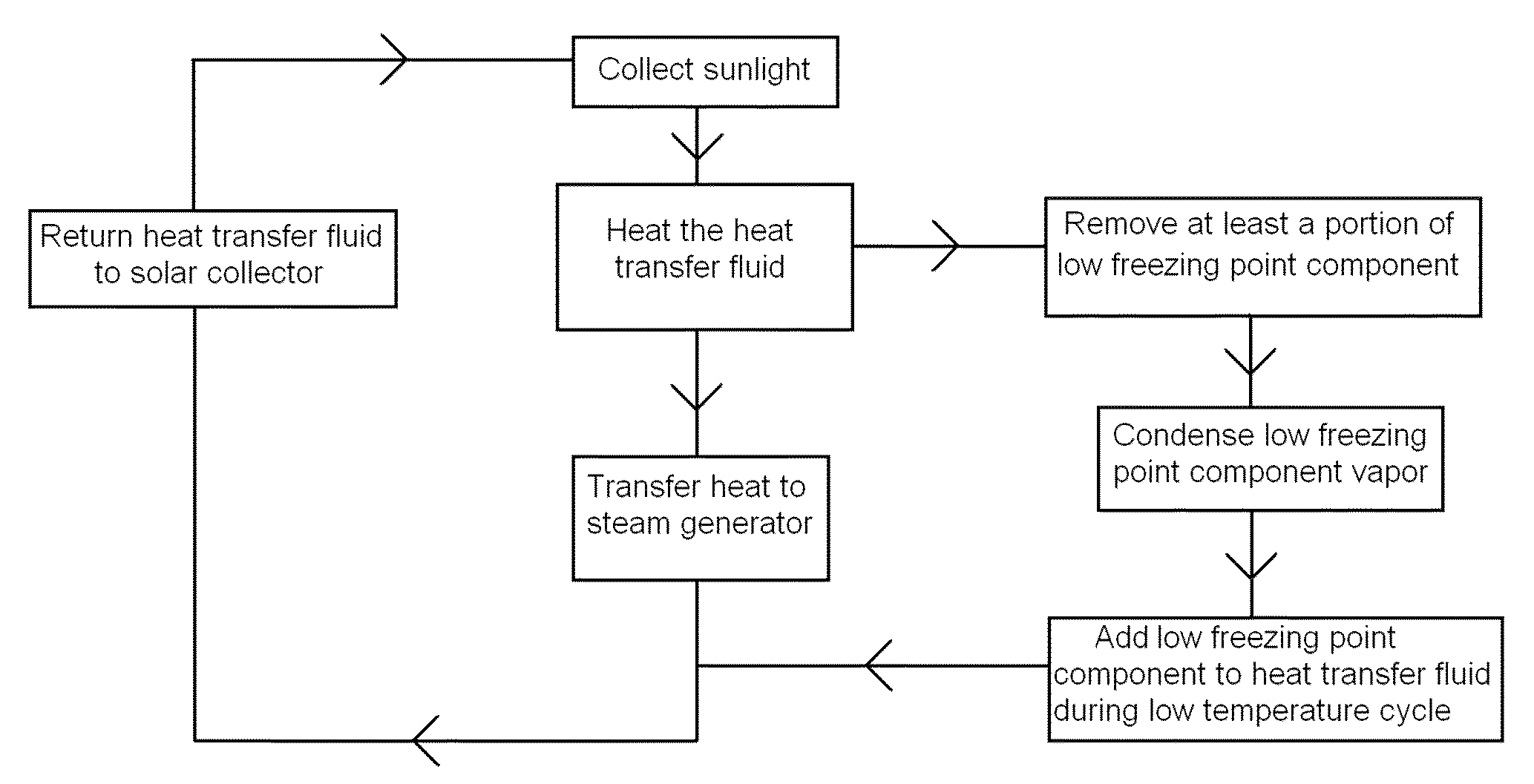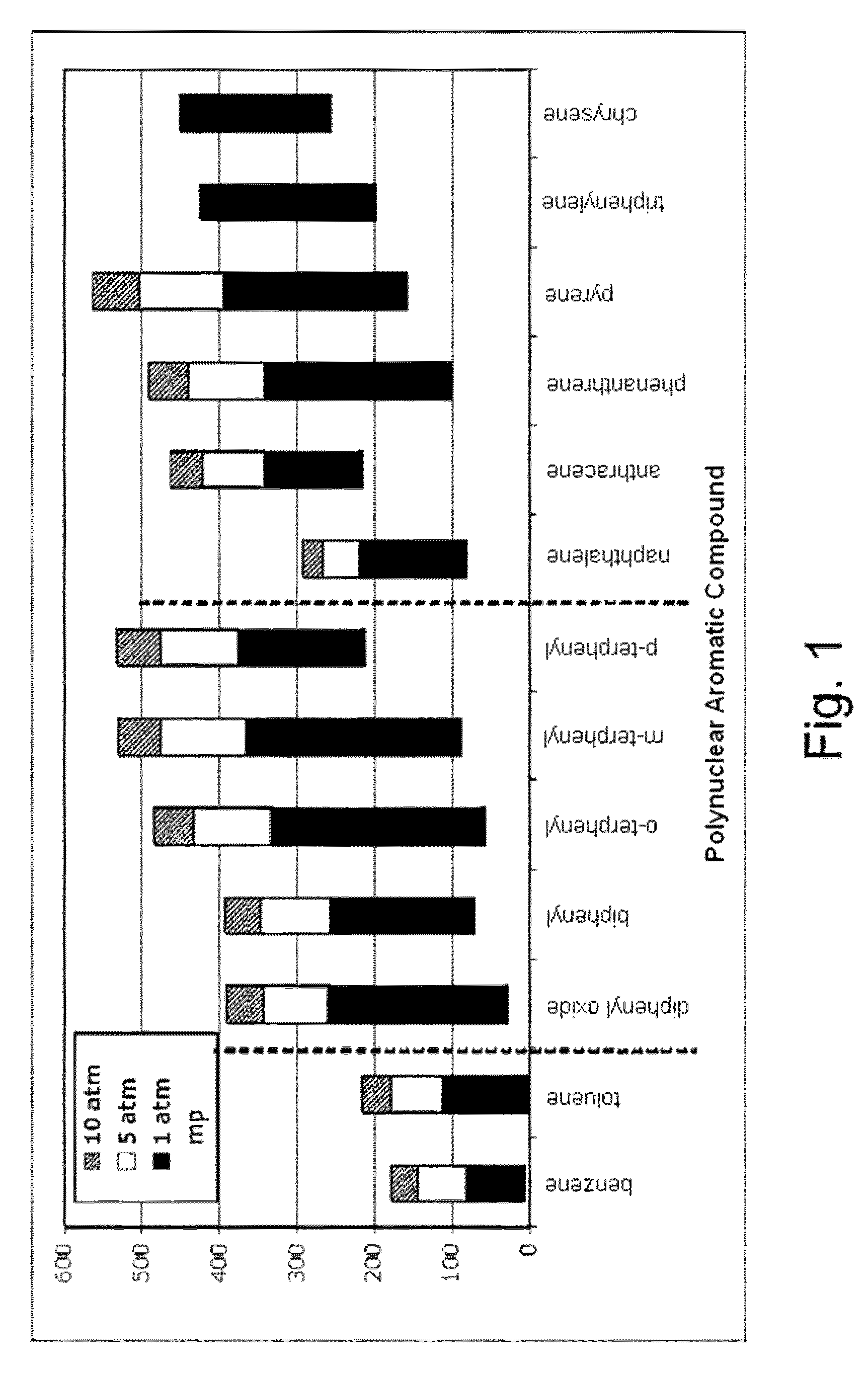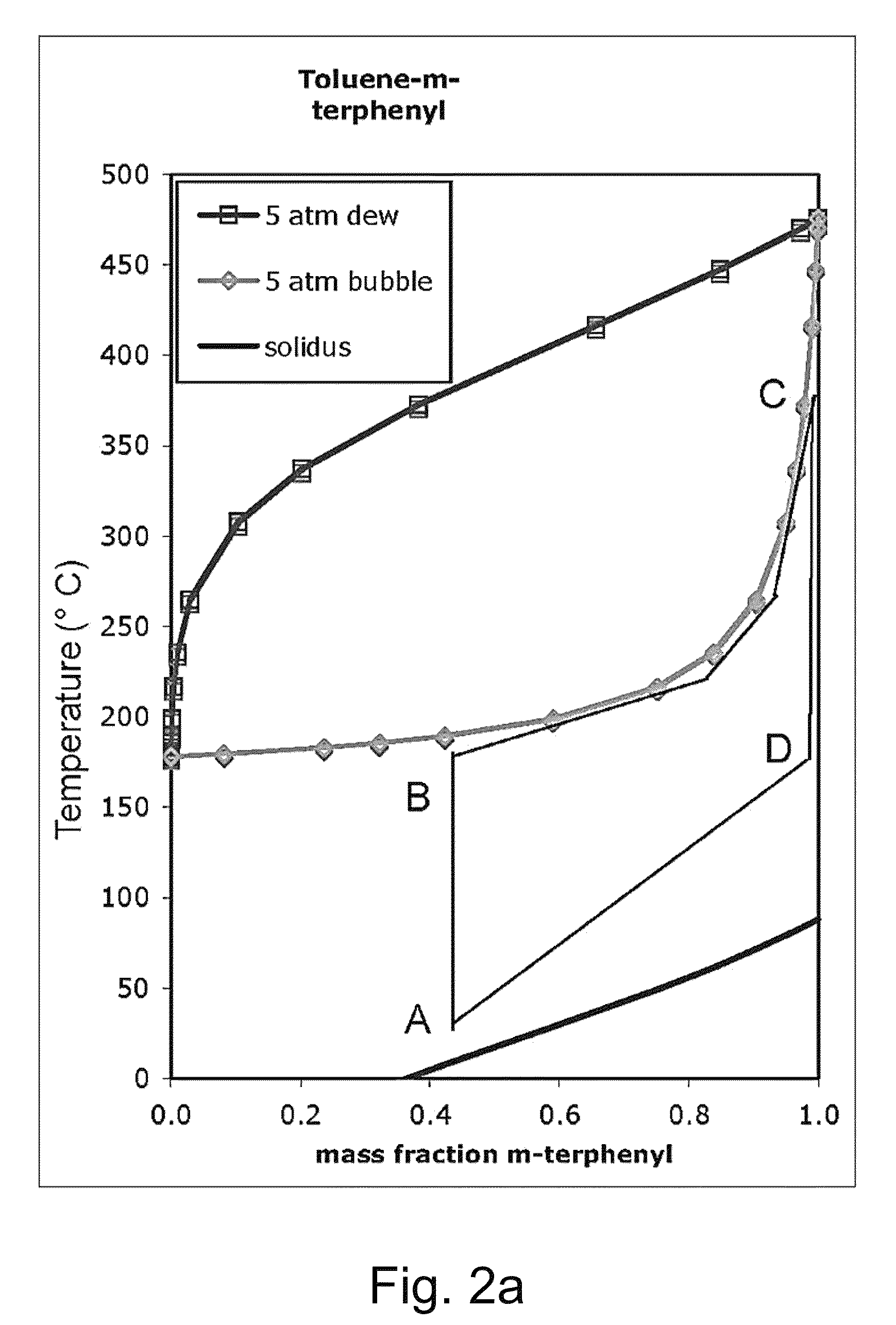Extended-range heat transfer fluid using variable composition
a heat transfer fluid and composition technology, applied in the direction of machines/engines, solar heat collectors, lighting and heating apparatus, etc., can solve the problems of reducing the occurrence and rate of thermal degradation of heat transfer fluid at high operating temperature, and achieve the effect of increasing the boiling point extending the operating temperature of heat transfer fluid, and lowering the vapor pressure of heat transfer fluid
- Summary
- Abstract
- Description
- Claims
- Application Information
AI Technical Summary
Benefits of technology
Problems solved by technology
Method used
Image
Examples
examples
Description and Technical Approach
[0083]Advanced Heat Transfer Fluid Specification
[0084]Because of the high heat flux at the receiver surface, vapor-phase and boiling heat transfer fluids are not favored for heat collection at the focus of a concentrating solar power collector. In consideration of the range of operating conditions envisioned for solar power collection, the following properties are desirable for a condensed-phase heat transfer medium:[0085]thermal stability as a liquid up to temperatures near 500° C.;[0086]vapor pressure of about 5 atmosphere up to temperatures near 500° C.;[0087]freezing point less than 80° C.;[0088]specific gravity in the range of 0.7-1.7 to about 500° C.;[0089]heat capacity in the range of 2-5 J / g / K to about 500° C.;[0090]viscosity of about 1 centipoise to about 500° C.; and[0091]chemical compatibility with common stainless steels.
[0092]For application in a power tower, the upper temperature target is raised to 600° C. and the freezing-point targe...
PUM
| Property | Measurement | Unit |
|---|---|---|
| freezing point temperature | aaaaa | aaaaa |
| pressure | aaaaa | aaaaa |
| freezing point | aaaaa | aaaaa |
Abstract
Description
Claims
Application Information
 Login to View More
Login to View More - R&D
- Intellectual Property
- Life Sciences
- Materials
- Tech Scout
- Unparalleled Data Quality
- Higher Quality Content
- 60% Fewer Hallucinations
Browse by: Latest US Patents, China's latest patents, Technical Efficacy Thesaurus, Application Domain, Technology Topic, Popular Technical Reports.
© 2025 PatSnap. All rights reserved.Legal|Privacy policy|Modern Slavery Act Transparency Statement|Sitemap|About US| Contact US: help@patsnap.com



